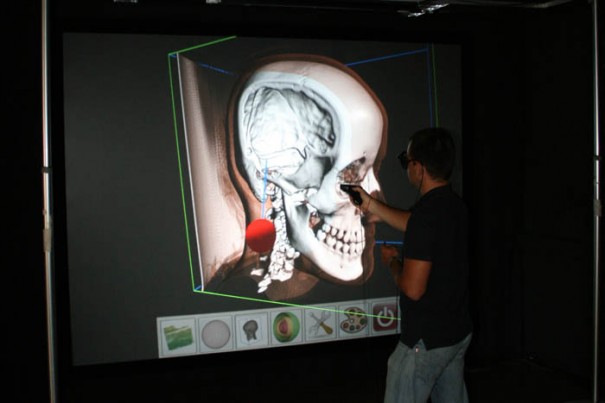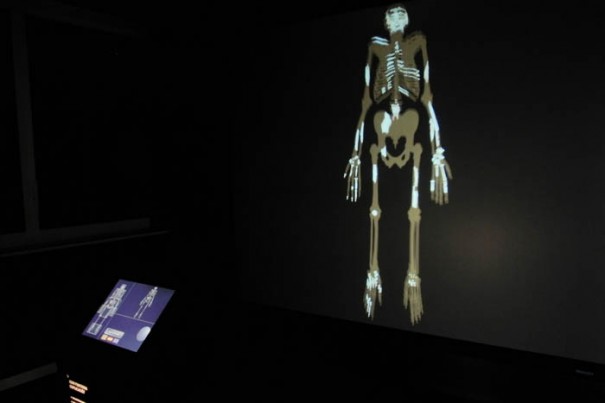StereoWall, a virtual wall that allows you to manipulate 3D objects
The Modelling Research Team, Visualization, Interaction and Virtual Reality (MOVING) of the Universitat Politècnica de Catalunya has presented EstereoWall, A virtual wall where images are projected and on which anyone, equipped with a remote control and 3D glasses, can inspect in great detail, For example, any part of the human body, from the skin, passing through muscles and veins, to the bones.
The Modeling Research Group, Visualization and Interaction in Virtual Reality (MOVING) of the Polytechnic University of Catalonia. BarcelonaTech (UPC) You have designed a virtual wall (EsteroWall) High-performance, low-cost for viewing and interacting with objects using stereoscopic images. The installation, that works with a complex software developed by the same team, It is an ideal tool for applications in medicine, Industrial Design and Paleontology, among other areas.
The EsteroWall or virtual wall system is based on a 270 high-resolution screen×200 cm where images are projected. It also consists of, among other elements, Two projectors connected to a central computer (PC), A mirror of reflection, a rear-projection screen, a positioning device and circularly polarized glasses for 3D viewing. The large stereoscopic projection system is also attached to the same PC with a high-performance graphics card. Uses a passive stereo system that, along with 3D glasses, offers high image quality and allows group viewing (15 people).
The virtual wall offers different interaction systems, With the Intersense system, that provides a very accurate detection of the user and their movements, and the touch screen, that serves to interact with the projected object.
In addition, It has a pointer with different control buttons and a virtual magic lantern, A unique system so far in the field of virtual reality. This flashlight is an inspection system to visualize and inspect both the interior and exterior of the object interactively at the same time., which favors a very detailed analysis of what you want to inspect. Like this, The magic lantern allows you to inspect in great detail, For example, any part of the human body, from the skin, passing through muscles and veins, to the bones.
Applications
The team that developed the virtual wall, led by Professor Isabel Navazo, He has initially devised it for teaching use to inspect anatomical models, Although it is a system that opens an infinite range of applications. In the medical field, it represents an advance to help diagnose and plan surgical operations. (How to simulate and plan an incision without injuring important organs or structures of the body), for learning in anatomy and for student practices.
In the industrial field, Facilitates and reduces costs in the cooperative design of virtual prototypes, since it allows to adjust the model to the needs before the construction, A great advantage in the field of ship design and naval engineering and also aeronautics. currently, The installation is already commercialized, through SENER.
In paleontology, It offers great potential because it allows to visualize in great detail fossil pieces, as is the case of the installation made in the museum of the Institut Català de Paleontologia Miquel Crusafont in Sabadell.
You liked this article?
Subscribe to our RSS feed And you won't miss anything.
• section: Infrastructure, projection, augmented reality, Bless you, simulation





